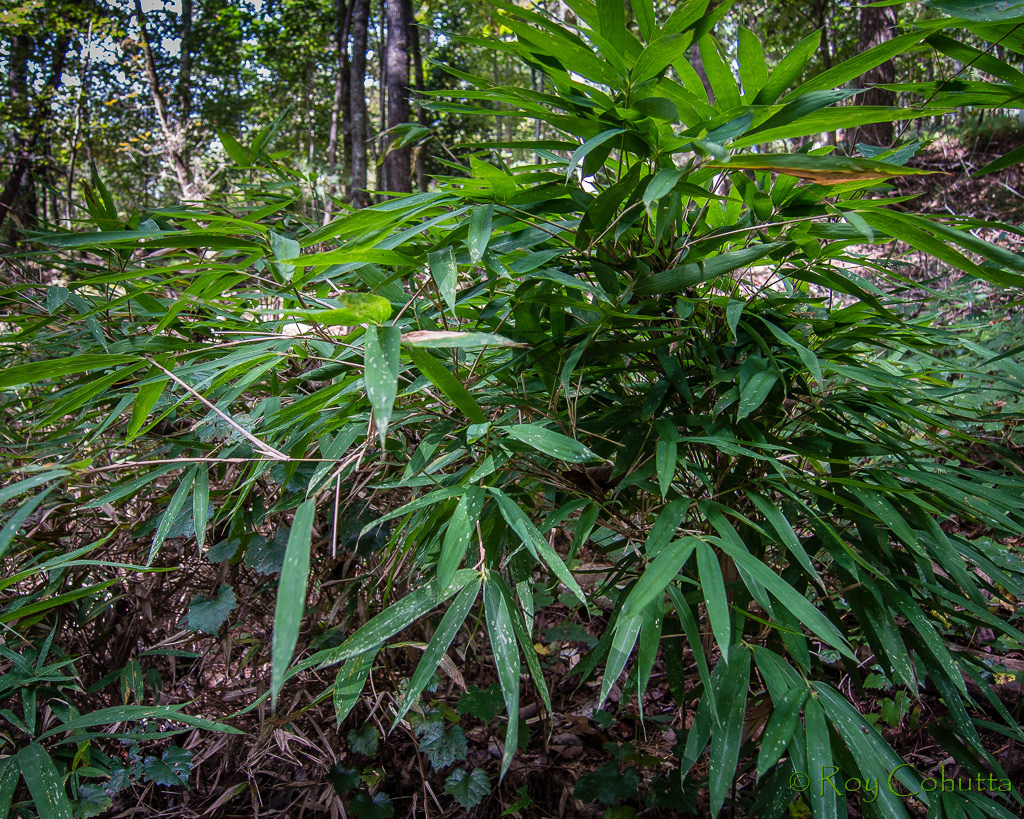Hill Cane
(Arundinaria appalachiana)

Description
Arundinaria appalachiana is the smallest member of its genus with the culms (i.e. the above-ground stems) usually attaining heights of 0.5 to 1 metre, though they are sometimes up to 1.8 metres tall. They are also quite thin at 0.2 to 0.6 cm in diameter. As with all bamboos, the culms emerge from subterranean rhizomes. In the case of hill cane, these are leptomorph, meaning they spread horizontally, but they typically do not reach very far before turning up to form a new culm. The rhizomes vary somewhat morphologically in that they sometimes have hollow centres and air canals The culms have internodes that are terete (i.e. smooth and cylindrical, but slightly tapering), while the culm sheaths are usually persistent (meaning they are not shed), but they may fall late in winter. These sheaths are 5.5 to 11 cm in length with oral setae (i.e. bristles where the sheath meets the blade) that are very short at 1 to 4.6 mm. The culm blades that appear at the apex of the sheaths are much shorter than the foliage leaves and measure 0.8 to 1.4 cm long. In Arundinaria, each new culm is topped with a fan-shaped cluster of leaves called a top knot. In A. appalachiana these consist of 6 to 12 leaves that are 9 to 22.5 cm in length by 1.4 to 2.8 cm in width and are linear (i.e. long and narrow), lanceolate (i.e. lance-shaped; slightly wider in the middle), or ovate-lanceolate (i.e. intermediate between egg-shaped and lance-shaped). The primary branches are erect, terete and typically no longer than 35 cm long. The bases of the primary branches contain between 2 and 5 compressed internodes and secondary branching does not occur at these basal areas. The foliage leaves are deciduous and their blades are typically 5 to 20 cm long by 0.8 to 2 cm wide. The blades have rounded bases and are chartaceous (i.e. paper-like). Their abaxial surfaces (i.e. undersides) show weak cross veining and are pilose (i.e. covered with fine, soft hairs) or glabrous (hairless), while the adaxial surfaces (i.e. upper sides) are always pilose. The ligules (i.e. a thin outgrowth at the meeting of the leaf and its sheath) are either glabrous or ciliate (i.e. fringed with hairs), lacerate (i.e. jagged) or fimbriate (i.e. fringed) The spikelets, the inflorescence found on all grasses, measure 3 to 5.5 cm in length and are typically a subtle reddish-purple in colour. Each spikelet contains 5 to 8 florets Flowering is currently very poorly understood. During the research done on the plant by Triplett, Weakley and Clark when describing the species, only one flowering specimen was encountered. While flowering is rare in most bamboos, this evidence suggests that it may be even less common in hill cane
Taxonomic tree:







